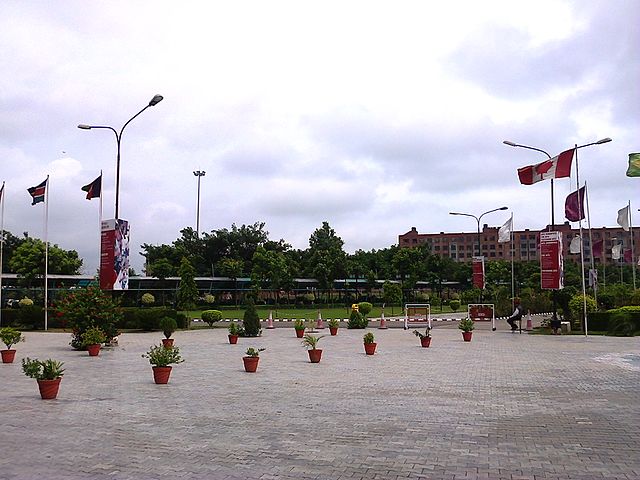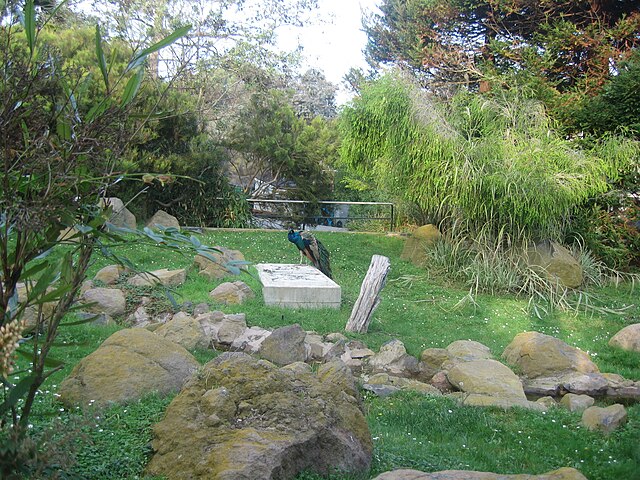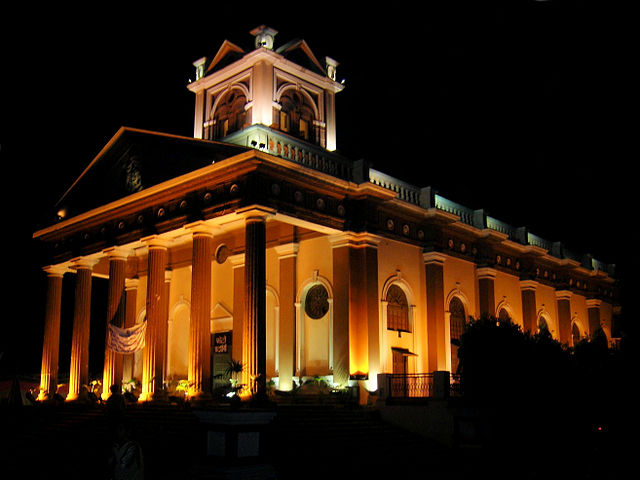Ever wondered what makes Kapurthala’s weather tick? This charming city in Punjab experiences a fascinating blend of seasonal changes that keep both residents and visitors on their toes. Located in the heart of Punjab, Kapurthala’s weather patterns tell a story of extremes – from sweltering summers that can make you question your life choices to pleasant winters that invite you to spend hours outdoors.
Understanding Kapurthala’s weather isn’t just about checking tomorrow’s forecast. It’s about grasping the rhythm of a city that dances to the tune of monsoons, basks in intense summer heat, and enjoys crisp winter mornings. Whether you’re planning a visit, considering relocating, or simply curious about this Punjab city’s climate, you’ve come to the right place.
Understanding Kapurthala’s Climate Pattern

Köppen-Geiger Classification
Kapurthala falls under the Cwa climate classification according to Köppen-Geiger standards, characterized by warm and temperate conditions with significantly lower winter precipitation compared to summer months. But what does this actually mean for you and me?
Think of Kapurthala’s climate as having a split personality. During winter, it’s like that friend who’s calm and composed, barely showing any emotional outbursts (read: minimal rainfall). Come summer, however, it transforms into someone who’s passionate and intense, with dramatic weather events and higher precipitation levels.
This subtropical highland climate creates distinct seasons that locals have learned to navigate with wisdom passed down through generations. The weather here doesn’t just change – it transforms completely, offering four distinct experiences throughout the year.
Seasonal Weather Overview
Kapurthala’s year unfolds like a well-written novel with four distinct chapters. Each season brings its own character, challenges, and charm. From the gentle awakening of spring to the dramatic intensity of summer, followed by the life-giving monsoons and the peaceful embrace of winter – this city experiences it all.
The transition between seasons isn’t gradual here. It’s more like switching TV channels – one day you’re in winter’s cool embrace, and seemingly overnight, spring announces its arrival with warmer temperatures and blooming flowers. This rapid seasonal shift is what makes planning activities and wardrobe choices both exciting and challenging.
Summer Weather in Kapurthala
Temperature Extremes
Summer temperatures in Kapurthala typically range from sweltering conditions reaching up to 103°F, with extreme peaks rarely exceeding 111°F. But numbers only tell part of the story. Imagine stepping outside and feeling like someone’s pointing a giant hair dryer at your face – that’s a typical summer afternoon in Kapurthala.
The summer months, stretching from April to June, are when Kapurthala truly tests your resilience. The sun doesn’t just shine; it dominates the sky with an intensity that turns concrete into griddles and makes air conditioning a necessity rather than a luxury.
Humidity Levels
What makes Kapurthala’s summers particularly challenging isn’t just the temperature – it’s the humidity that comes along for the ride. The air becomes thick and heavy, like walking through an invisible soup. This combination of heat and humidity creates that sticky feeling where your clothes seem to cling to your skin no matter what you do.
Morning hours offer some respite, but by noon, the humidity builds up to levels that make even simple tasks feel exhausting. It’s during these months that locals master the art of strategic timing – planning activities during early morning or late evening hours.
Monsoon Season Characteristics

Rainfall Patterns
The monsoon season in Kapurthala is like nature’s grand finale after months of building tension. Usually arriving in July and lasting through September, the monsoons bring dramatic relief from the scorching summer heat. The first drops of rain are often celebrated like a festival – and for good reason.
During peak monsoon months, the city can receive substantial rainfall that transforms the landscape from brown and dusty to lush and green. The rain doesn’t just fall; it performs – sometimes as gentle drizzles that last for hours, other times as dramatic downpours that can flood streets within minutes.
Duration
The monsoon season typically spans three to four months, but its intensity varies significantly. Some years bring abundant rainfall that replenishes groundwater and fills reservoirs, while others may disappoint with sparse precipitation. This variability makes monsoon prediction both crucial and challenging for local farmers and residents.
Winter Weather Conditions
Temperature Range
Winter temperatures in Kapurthala can drop to around 40°F, rarely falling below 35°F, creating short but notably cold conditions. Winter in Kapurthala is like that perfect guest who doesn’t overstay their welcome. The season brings relief from the year’s extremes, offering comfortable daytime temperatures and pleasantly cool nights.
December through February transforms Kapurthala into a completely different city. The harsh summer sun becomes a welcome companion, providing warmth without overwhelming intensity. Morning fog often creates an ethereal atmosphere, making familiar streets look like scenes from a dream.
Dry Season
Winter doubles as the dry season, with minimal rainfall and low humidity levels. This combination creates ideal conditions for outdoor activities, festivals, and social gatherings. The air becomes crisp and clean, offering a refreshing change from the heavy, humid atmosphere of other seasons.
Spring Weather Transition
Spring in Kapurthala is nature’s way of giving you a preview of what’s coming. March through May serves as a bridge between winter’s calm and summer’s intensity. It’s like watching a movie trailer – you get glimpses of the dramatic summer ahead while still enjoying winter’s gentle aftermath.
The temperature begins its upward climb gradually, then accelerates rapidly. One day you’re enjoying pleasant 70°F weather, and within weeks, you’re dealing with temperatures approaching 90°F. This rapid transition often catches people off guard, making spring the season of constantly changing wardrobes.
Temperature Variations Throughout the Year
Understanding Kapurthala’s temperature patterns is like learning a complex musical composition. Each month has its own note, and together they create the symphony of the city’s climate. January brings the coolest temperatures, often requiring light jackets and warm clothing for early morning and evening hours.
As the year progresses, February and March gradually warm up, creating some of the most pleasant weather conditions. April and May signal the beginning of intense heat, with temperatures climbing steadily toward their summer peaks. June often marks the hottest period before monsoons arrive to provide relief.
The post-monsoon months of October and November offer another window of pleasant weather before winter’s return. This cyclical pattern has shaped local customs, festivals, and daily routines for generations.
Rainfall and Precipitation Patterns

Annual Distribution
Kapurthala’s rainfall patterns follow a distinctly seasonal rhythm. The bulk of annual precipitation arrives during the monsoon months, with July and August typically seeing the heaviest downpours. The city might receive 80% of its annual rainfall during these few months, making water conservation and management crucial.
Pre-monsoon and post-monsoon periods may bring occasional showers, but these are often brief and unpredictable. Winter months remain predominantly dry, with rare precipitation events that locals often view as pleasant surprises.
Peak Months
July and August stand out as the peak rainfall months, when the city can receive several inches of precipitation within days or even hours. These intense rainfall periods can lead to temporary flooding in low-lying areas and create challenges for daily commuting and outdoor activities.
Humidity and Air Quality Factors
Seasonal Variations
Humidity in Kapurthala fluctuates dramatically with the seasons. Summer months bring oppressive humidity levels that make the heat feel even more intense. The combination of high temperatures and moisture creates uncomfortable conditions that test even the most heat-adapted residents.
Monsoon season maintains high humidity levels, but the regular rainfall provides psychological relief from the heat. Winter months offer the most comfortable humidity levels, creating ideal conditions for outdoor activities and social gatherings.
Air quality varies seasonally as well, with post-harvest burning in surrounding agricultural areas sometimes affecting visibility and respiratory comfort during certain months.
Weather-Related Challenges
Heat Waves
Kapurthala occasionally experiences heat waves that push temperatures well above normal summer averages. These events can be particularly dangerous for vulnerable populations and require special precautions. Heat waves often coincide with power outages, creating additional challenges for residents.
Fog
Winter months sometimes bring dense fog that can reduce visibility to just a few meters. This phenomenon affects transportation, including road and rail traffic, and can disrupt daily routines. The fog typically forms during early morning hours and may persist until late morning.
Air Pollution
Seasonal air pollution, particularly during post-harvest periods, can affect air quality. Smoke from agricultural burning combines with urban pollution to create hazy conditions that may impact respiratory health and visibility.
Best Time to Visit Kapurthala
If you’re planning a visit to Kapurthala, timing is everything. The period from October to March offers the most comfortable weather conditions for tourists and outdoor activities. During these months, daytime temperatures remain pleasant while nights provide refreshing coolness.
November through February represents the sweet spot for visiting. The oppressive summer heat is a distant memory, monsoon humidity has cleared, and the pleasant winter weather creates ideal conditions for exploring the city’s attractions, including its famous palaces and gardens.
Spring months (March to early April) can also be enjoyable, but visitors should be prepared for rapidly increasing temperatures. Summer visits require careful planning and heat management strategies.
Local Weather Forecasting Resources
Reliable Sources
Staying informed about Kapurthala’s weather requires accessing reliable forecasting sources. Local meteorological departments provide official forecasts, while various weather apps and websites offer detailed predictions and current conditions.
Apps
Popular weather applications provide real-time updates, hourly forecasts, and severe weather warnings. Many residents rely on multiple sources to get accurate predictions, especially during monsoon season when conditions can change rapidly.
Local news channels and radio stations also provide regular weather updates tailored to the region’s specific needs and concerns.
Climate Change Impact on Kapurthala
Recent Trends
Climate change is affecting Kapurthala’s traditional weather patterns. Recent years have shown variations in monsoon timing and intensity, with some seasons bringing excessive rainfall while others fall short of expectations. Temperature extremes are becoming more pronounced, with hotter summers and occasionally milder winters.
Future Projections
Climate scientists predict continued changes in precipitation patterns and temperature ranges. These changes may affect agricultural practices, water resources, and urban planning in the region. Adaptation strategies are becoming increasingly important for long-term sustainability.
Weather Safety Tips for Residents
Seasonal Precautions
Living in Kapurthala requires seasonal awareness and preparation. Summer months demand heat protection strategies, including staying hydrated, avoiding outdoor activities during peak hours, and maintaining cooling systems. Monsoon preparation involves checking drainage systems, waterproofing homes, and having emergency supplies ready.
Winter fog requires extra caution while driving and walking, with reduced visibility posing safety risks. Air quality monitoring during certain seasons helps residents make informed decisions about outdoor activities and health precautions.
Year-round weather awareness helps residents prepare for sudden changes and extreme events. Keeping emergency supplies, maintaining flexible schedules, and staying informed about weather forecasts are essential practices for comfortable living.
Conclusion
Kapurthala’s weather tells the story of a city that experiences nature’s full spectrum. From the intense summer heat that tests your endurance to the refreshing monsoons that bring life back to the landscape, and from the comfortable winters that invite outdoor celebrations to the transitional springs that prepare you for another cycle – this city’s climate is nothing if not dynamic.
Understanding these weather patterns isn’t just about satisfying curiosity; it’s about learning to live in harmony with nature’s rhythms. Whether you’re a resident who’s called Kapurthala home for years or a visitor planning your first trip, appreciating the city’s climatic personality helps you make the most of what each season offers.
The key to enjoying Kapurthala’s weather lies in embracing its extremes rather than fighting them. Each season brings its own gifts – summer’s long days and vibrant energy, monsoon’s dramatic beauty and life-giving rains, winter’s peaceful comfort and perfect outdoor conditions, and spring’s promising warmth and renewal.
As climate patterns continue to evolve, staying informed and adaptable becomes even more important. But one thing remains constant: Kapurthala’s weather will continue to surprise, challenge, and reward those who take the time to understand its patterns and respect its power.
Frequently Asked Questions
1. What is the hottest month in Kapurthala?
May and June typically see the highest temperatures in Kapurthala, with maximum temperatures often reaching 103°F or higher. June particularly stands out as the peak summer month before monsoon relief arrives.
2. When does the monsoon season start and end in Kapurthala?
The monsoon season usually begins in early to mid-July and continues through September. However, the exact timing can vary from year to year, with some years experiencing early or delayed monsoon arrival.
3. Is winter cold enough to require heavy clothing in Kapurthala?
While winters are mild compared to northern regions, temperatures can drop to around 40°F, making light woolens and jackets necessary, especially during early morning and evening hours. Heavy winter clothing is generally not required.
4. How does air quality vary throughout the year in Kapurthala?
Air quality is generally better during monsoon and winter months due to rain washing away pollutants and reduced dust. Post-harvest periods (typically October-November) may see temporary air quality issues due to agricultural burning in surrounding areas.
5. What’s the best time to plan outdoor activities in Kapurthala?
October through March offers the most comfortable conditions for outdoor activities. Within this period, November through February provides the most pleasant weather with moderate temperatures and minimal rainfall probability.

